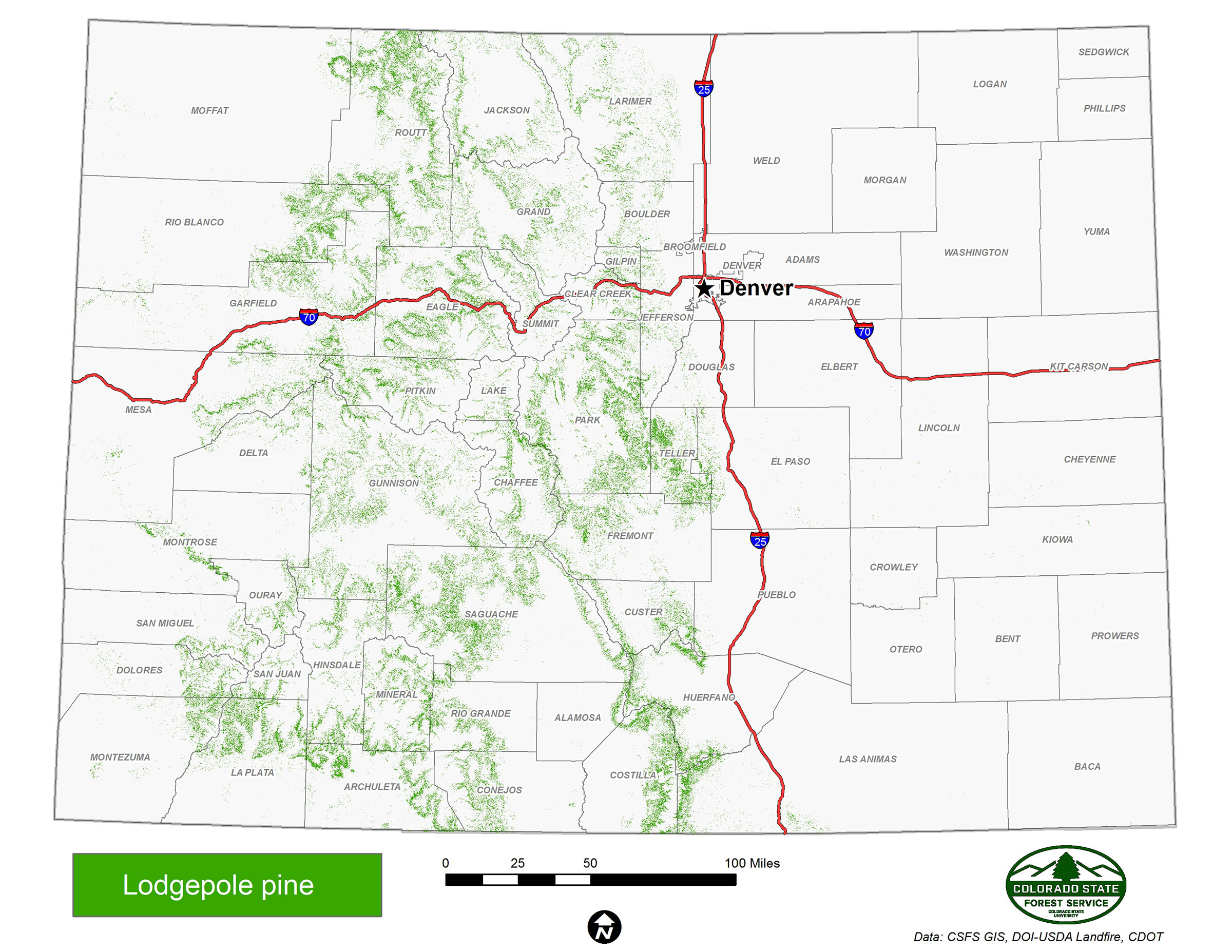Lodgepole Pine
Lodgepole pine forests cover slightly more than 1.5 million acres in Colorado or approximately 7 percent of the state’s forested lands. Lodgepole pine (Pinus contorta) is a familiar species in the montane and subalpine forests of Colorado’s northern Rocky Mountains between 8,000 and 10,000 feet in elevation.
Click on the map to view full size
Lodgepole pine tolerates a wide variety of climatic and soil conditions, but achieves its best growth on gentle slopes and in basins with well-drained, slightly acidic, sandy or gravelling loams.
Lodgepole pine forests grow and die uniformly. Most of Colorado’s lodgepole pine forests developed following hot, stand-replacing crown fires (CSFS 2008)1. Lodgepole pine is intolerant to shade and thrives in the aftermath of fire; many lodgepole produce serotinous cones, which open in response to extreme heat and release an abundance of seeds. These long-lived cones may remain viable for decades, waiting for a fire to release their seeds. The prolific regeneration that naturally occurs in the open, sunny areas left in the fire’s wake often results in dense stands of 20,000 or more trees per acre. These forests often are referred to as dog-hair stands.
The Importance of Lodgepole Pine
Lodgepole pine forests blanket many landscapes tied to Colorado’s water supply and provide the back-drop for popular recreational activities such as skiing, hiking and biking. In the late 19th century, much of Colorado’s demand for railroad ties was supplied by lodgepole pine forests, which still provide a range of wood products, including house logs, structural lumber, log furniture, decking, telephone poles and structural plywood (CSFS 2006)2. Plant and animal diversity tends to be relatively low in lodgepole pine forests, but they do provide important cover for mule deer, elk, black bear and a variety of birds and small mammals. Mountain pine beetle (MPB) and dwarf mistletoe are the most damaging agents of lodgepole pine.
Learn More
For information about managing lodgepole pine, see:
Lodgepole Pine Management Guidelines for Land Managers in the Wildland-Urban Interface (1.3 MB PDF)
For information about the ecology of and fire behavior in lodgepole pine, see:
The Status of Our Scientific Understanding of Lodgepole Pine and Mountain Pine Beetles – A Focus on Forest Ecology and Fire Behavior (808 KB PDF)
Text Citations
1Colorado State Forest Service. 2008 Report: The Health of Colorado’s Forests – Special Issue: High Elevation Forests (9.5 MB PDF).
2Colorado State Forest Service. 2006 Report on the Health of Colorado’s Forests – Special Issue: Lodgepole Pine Forests (2.6 MB PDF).
Data Sources
NatureServe. 2018. International Ecological Classification Standard: Terrestrial Ecological Classifications. NatureServe Central Databases. Arlington, VA. U.S.A. Data current as of 28 August 2018.
2017 Colorado Wildfire Risk Assessment, Colorado State Forest Service.


